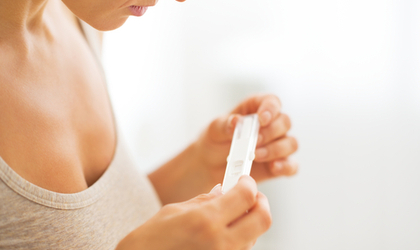
It may surprise you to learn women get UTIs up to 30 times (30 times!) more than men (1). That’s a lot of unnecessary discomfort and running to the bathroom.
Urinary tract infections (UTIs) are a complicated issue. While antibiotic treatment for UTIs is typically very effective, it doesn’t address the root cause of the problem. Excessive antibiotic use is also known to affect gut health. And that’s not even taking into account that antibiotic resistance is now very common in the treatment of urinary tract infections.
If you feel like pulling your hair out at yet another UTI, you’re not alone. The good news is that with the right dietary, lifestyle, and sexual wellness changes, it is indeed possible to prevent and manage urinary tract infections.
What is a UTI?
A urinary tract infection (UTI) is any infection of the urinary system. It can affect your bladder, urethra, and kidneys. UTIs occur when bacteria infiltrate the urinary system, causing infection and inflammation. Although UTI treatment is usually successful, some women develop recurrent UTIs. UTIs become chronic if you’ve had two or more infections in six months.
UTI symptoms in women
-
A burning or stinging sensation when passing urine
-
Passing small, frequent amounts of urine
-
A strong, persistent urge to urinate
-
Urine that appears cloudy and has a strong odour
-
Blood in your urine
What causes UTIs?
Women are more likely to experience UTIs than men because of anatomical differences. In a female body, the urethra is located near both the anus and vagina, which increases the risk of a UTI. Urethras in women also tend to be shorter, so the bacteria have less distance to travel to enter the bladder. Sex and hormonal changes, especially around menstruation and menopause, can also leave women more prone to UTIs.
UTIs and sex
For many women, sex is a common trigger for UTIs. But the ‘avoid sex completely’ advice is no longer practical, realistic, or fair, especially when it concerns someone who’s already struggling and in pain. Unfortunately, there’s very little in the way of scientific research around the topic of UTIs after sex. One school of thought suggests that pressure on the urinary tract during penetrative sex can move bacteria from the anus into the bladder. Oral sex can also introduce bacteria into the urethra.
Tips for avoiding UTIs after sex:
-
Always wash your hands before any sexual activity (we all know hands transfer germs) and ask your partner to do the same.
-
Shower before sex, and ask your partner to do the same.
-
Consider that oral sex can transfer organisms just as any other sexual contact can. You may wish to experiment with different approaches here.
-
Always urinate immediately after sex to help flush your urinary tract.
-
Try using condoms. Latex-free condoms may be particularly helpful. Avoid spermicidal condoms and lubricants since they can trigger UTIs.
-
Avoid lubricants that contain glycerine, sorbitol, sugar, or any sweetener that can become food for bacteria and lead to infections.
-
If the problem appears to be specific to sex, consider whether your partner should also be tested. Don’t ignore the possibility that some STIs can masquerade as UTIs.
Can a UTI be caused by hormones?
For many women, hormonal changes and UTIs go hand in hand. And this may be linked to the drop in oestrogen that’s often associated with menopause, just before and just after menstruation (temporarily), and in postpartum and when breastfeeding (temporarily).
Oestrogen is believed to help maintain the thickness and strength of the vaginal wall, which prevents bacteria from reaching deeper layers of the urinary tract lining. Indeed, studies on post-menopausal women suggest oestrogen may strengthen the cells in the urinary tract (2).
If you’re struggling with UTIs in menopause, you may wish to increase your intake of dietary soy, a phytoestrogen that mimics oestrogen in the boy. Tofu, tempeh, Edamame, miso, and soya milk are excellent choices.
UTI prevention
Aside from taking care after sex and making an effort to balance your hormones, some general lifestyle changes may help prevent the re-occurrence of UTIs.
-
Avoid wearing tight-fitting clothing, choose breathable, cotton underwear, and change your underwear every day.
-
Your vagina is a self-cleaning organ. Feminine washes, douches, bubble baths, soaps, and anything artificially fragranced (even your laundry detergent!) may disrupt your vagina’s natural flora and pH balance and trigger a UTI. All you need is warm water to wash your vagina.
-
Change tampons and sanitary pads frequently.
-
When you pass urine, ensure that you empty your bladder completely.
-
Always wipe front to back when you use the bathroom. This will prevent bacteria from the anus from contaminating your urethra.
-
It may sound obvious but drink lots of water!
-
Stress may increase the likelihood of UTIs. Do whatever you need to decompress and unwind: meditate, practise yoga, exercise more, and ensure you get enough sleep every night.
UTI treatment: Nutritional support:
Tending to your vaginal health is often an inside job. One of the most important ways to prevent and manage UTIs is by changing your diet.
Does cranberry juice help UTIs?
Cranberries continue to be widely used amongst women to support bladder health. Like many dark-skinned fruits, cranberries are rich in compounds called polyphenols and anthocyanins. But unlike other red fruits, cranberries contain exceptionally high levels of A proanthocyanidins (PACs A).
Look after your gut and vaginal flora
If you’ve been prescribed endless antibiotics for recurrent UTIs, looking after your gut is especially important. Though necessary to treat an infection, excessive antibiotic use is known to compromise your gut and vaginal flora.
Alongside increasing your intake of plants and fermented foods – rich in soluble fibre that feeds your gut – taking live cultures can help, too. Studies have also shown that certain strains of live cultures may support vaginal and urinary tract health (3).
Eating more soluble fibre in the natural form of fructo-oligosaccharides (FOS) may help maintain intestinal health.
What foods are best to avoid if you are prone to UTIs?
Tea, coffee, refined sugar, citrus fruits, and alcohol are widely known UTI triggers. You may wish to experiment with changing your diet to identify if certain foods contribute to infection or exacerbate your symptoms.
Consider a candida cleanse
Candida (yeast) overgrowth may lead to recurrent UTIs. Stress, alcohol, poor diet, and the contraceptive pill can trigger an overgrowth. Frustratingly, candida overgrowth can be aggravated by frequent antibiotic use, which many women are well acquainted with if they experience recurrent UTIs. Candida overgrowth often can also lead to yeast infections (thrush). And so, you may find yourself plagued by a constant cycle of UTIs and yeast infections.
If you suspect candida overgrowth might be contributing to UTIs, you may wish to get tested. With accurate results, you can then change your diet accordingly. A short-term candida cleanse involves removing alcohol, processed food, gluten, sugar, some fruits, and dairy from your diet for a short period. We recommend working with a nutritionist if you decide to go down this route.
Will a UTI go away on its own?
Most UTIs are mild and often clear up on their own without needing antibiotics. To give your body the best fighting chance, drink lots of water to help flush the bacteria in your bladder out, avoid washing your genital area with perfumed soaps, avoid having sex until your UTI has passed, and avoid wearing tight clothing or synthetic underwear. Dissolvable sachets containing sodium citrate or potassium citrate may help relieve your UTI symptoms.
If, however, your UTI hasn’t cleared up within two days, especially if you notice blood in your urine or experience a fever, always see your GP. Untreated UTIs can become more dangerous the further they spread.
Are UTI tests reliable?
A final note on UTI testing: unfortunately, the gold standard UTI test, used since the 1950s, is spectacularly inaccurate. Many studies suggest traditional urine culturing techniques – which involve UTI test strips as an initial indicator – can’t detect an infection in at least 50 per cent of cases and is no longer fit for purpose (4).
Many women continue to receive negative or inconclusive test results despite symptoms. Learning more about this issue can help you seek better care and take control of the situation. If you’re dissatisfied with your UTI test results, you may wish to send your urine to a private lab where it can be cultured for longer and detect the underlying infection.
Struggling with UTIs and recurrent infections can be incredibly challenging. If you need further support on optimising your nutrition to manage UTIs, feel free to reach out to our team of expert Nutrition Advisors here.
References
-
Foxman B, Barlow R, D’Arcy H, Gillespie B, Sobel JD. (2000) Urinary tract infection: self-reported incidence and associated costs. Ann Epidemiol. 10:509–15.
-
P. Luthje, H. Brauner, N. L. Ramos, A. Ovregaard, R. Glaser, A. L. Hirschberg, P. Aspenstrom, A. Brauner. (2013) Estrogen Supports Urothelial Defense Mechanisms. Science Translational Medicine, 5 (190): 190ra80
-
Cribby, S., Taylor, M., & Reid, G. (2008). Vaginal microbiota and the use of probiotics. Interdisciplinary perspectives on infectious diseases, 2008, 256490.
-
Mambatta, A. K., Jayarajan, J., Rashme, V. L., Harini, S., Menon, S., & Kuppusamy, J. (2015). Reliability of dipstick assay in predicting urinary tract infection. Journal of family medicine and primary care, 4(2), 265–268.
Related Posts
Disclaimer: The information presented by Nature's Best is for informational purposes only. It is based on scientific studies (human, animal, or in vitro), clinical experience, or traditional usage as cited in each article. The results reported may not necessarily occur in all individuals. Self-treatment is not recommended for life-threatening conditions that require medical treatment under a doctor's care. For many of the conditions discussed, treatment with prescription or over the counter medication is also available. Consult your doctor, practitioner, and/or pharmacist for any health problem and before using any supplements or before making any changes in prescribed medications.

Olivia
Olivia Salter has always been an avid health nut. After graduating from the University of Bristol, she began working for a nutritional consultancy where she discovered her passion for all things wellness-related. There, she executed much of the company’s content marketing strategy and found her niche in health writing, publishing articles in Women’s Health, Mind Body Green, Thrive and Psychologies.
View More



